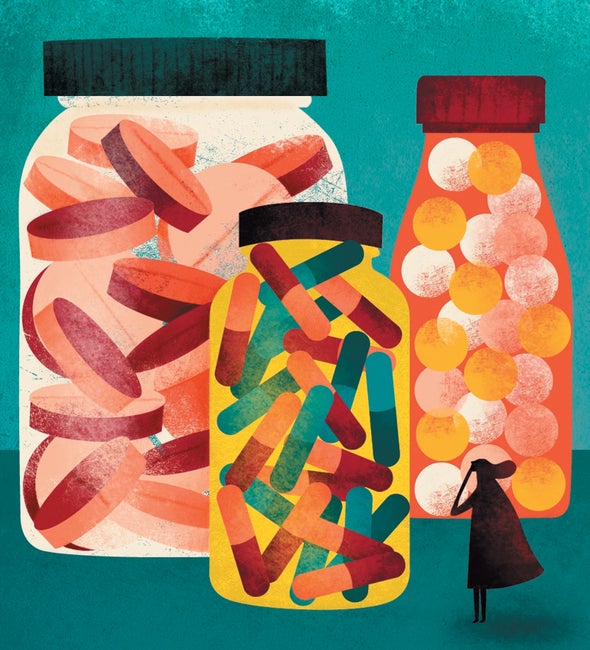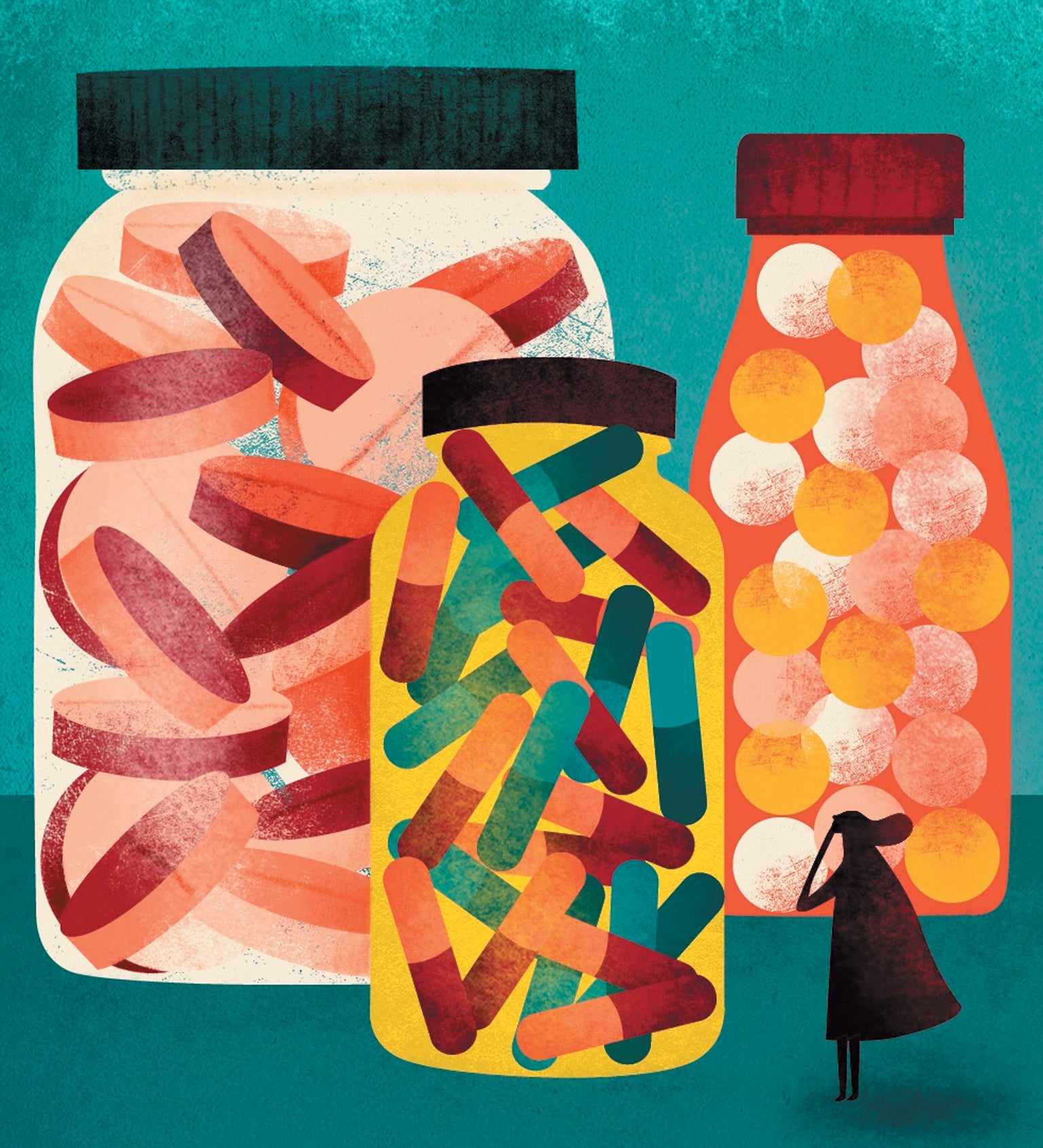Over-the-counter analgesics can be quite effective, but high doses have downsides

After tens of thousands of overdose deaths and billions of dollars in lawsuits, the medical establishment has gotten the memo on opioids. Instead of prescribing OxyContin or Percocet for acute pain, doctors are increasingly offering patients prescription-level doses of popular painkillers sold over the counter: acetaminophen (Tylenol) and nonsteroidal anti-inflammatory drugs (NSAIDs) such as ibuprofen (Motrin or Advil). Five hundred milligrams (mg) of acetaminophen given with 200 mg of ibuprofen is more effective than opioids for postoperative pain and dental pain, research has shown, and the combo causes fewer side effects, with essentially no risk of addiction. NSAIDs are good even for excruciating kidney stones and minor fractures. And they are safer than and at least as effective as opioids for arthritis pain and lower backaches.
Still, there is no such thing as a risk-free drug, and that goes for our most trusted painkillers. Beyond dangers that have been known for decades—NSAIDs can irritate the gastrointestinal tract and cause serious bleeding; acetaminophen in daily doses of more than 4,000 mg can poison the liver—additional problems have emerged in more recent years. As our reliance on these pills grows, it makes sense to take a closer look at their potential harms and why they occur. “With this mad rush to get people off opioids, we will undoubtedly start to see an increase in adverse events from NSAIDs and acetaminophen. It’s inevitable,” says Sean Mackey, chief of pain medicine at Stanford University.
In addition to causing bleeding, almost all NSAIDs—aspirin is the exception—can raise the risk of heart attacks, strokes and heart failure. These dangers came into sharper focus in the early 2000s after the release of a new kind of NSAID called COX-2 inhibitors, which block an enzyme called cyclooxygenase-2 (most NSAIDs target both COX-1 and COX-2 enzymes). Designed to be easier on the gut, they proved rough on the circulatory system, and two of these drugs were withdrawn. (A third, celecoxib, or Celebrex, remains on the market.) These events prompted more scrutiny of other nonaspirin NSAIDs, and all were found to carry cardiovascular risks. In 2015 the U.S. Food and Drug Administration strengthened warnings about the dangers, which are greatest for people with heart disease or risk factors for it. That does not mean Advil and Aleve (naproxen) are off-limits for heart patients when they twist an ankle or strain their back, says Christian Ruff, director of cardiology at Brigham and Women’s Hospital in Boston. “What I tell patients is to use NSAIDs for short periods and to take the lowest dose that provides the necessary pain relief.”
Because they inhibit COX enzymes, which play a downstream role in everything from blood clotting to tissue repair, NSAIDs affect the cardiovascular system in multiple ways. “They increase heart attack and stroke risk by promoting clotting,” Ruff explains. “They can impair wound healing after a heart attack, and they promote fluid and salt retention, which can overburden the heart and cause it to fail.” NSAIDs can also damage the kidneys, which in turn burdens the heart. Aspirin does not cause these issues, but because it raises the odds of bleeding, it is no longer widely used for pain relief, nor is it as widely recommended for preventing heart attacks.
The impact on kidneys underlies dangers during pregnancy. Last year the FDA warned against taking NSAIDs at 20 weeks or later in pregnancy, when they might harm fetal kidneys and thereby cause low levels of amniotic fluid. People who cannot take NSAIDs because of heart or kidney disease or pregnancy are often advised to use acetaminophen, also called paracetamol. Though useful for pain and fever, this drug, unlike NSAIDs, does not reduce inflammation, and it has an unusual safety profile. “It is very safe up to a certain threshold, and above that line it is very hazardous,” says Erin Krebs, a pain researcher and professor of medicine at the University of Minnesota. Krebs says it’s “crazy” that the drug is present in more than 600 products (such as cold and flu formulas) because that makes it all too easy to go overboard. In the U.S., acetaminophen poisoning has displaced hepatitis as the most common reason people need a liver transplant.
Still, with judicious use, most people can take these painkillers without incident. “It’s more challenging if you are going to use them long term,” Mackey says. “When people stay on NSAIDs chronically, we monitor them with blood work and make sure they take the stuff with food and fluids.” Individuals vary greatly in their response to analgesics, whether an NSAID, Tylenol or any of the scores of prescription drugs used for pain. Mackey often has patients try several before landing on what works best. “But understand,” he notes, “that everything we put inside us carries some risk. There’s no free lunch.”
This article was originally published with the title “Painkiller Risks” in Scientific American 325, 5, 25 (November 2021)
doi:10.1038/scientificamerican1121-25
ABOUT THE AUTHOR(S)
Claudia Wallis is an award-winning science journalist whose work has appeared in the New York Times, Time, Fortune and the New Republic. She was science editor at Time and managing editor of Scientific American Mind.
